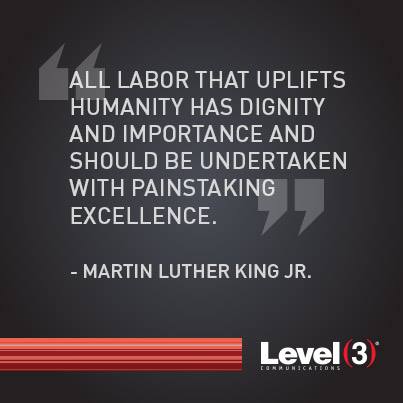Participate and Share
In the early 2000's, I read a riveting blog post by a young guy who talked about having to leave himself in the car every day as he went into work. It ended with, "And in the evenings I always hope I'll get off in time to come back out and reunite with myself... before I'm gone."
We are living at the intersection of two opposing work worlds, The Industrial Age, which is still strangely dominant in the front office of most companies. And the Participation Age, which is emerging as the new standard for how we work.
In the production area, we have replaced Industrial Age assembly lines and smokestacks with things like nanotechnology and clean rooms. But the front office looks pretty much the same way it did a hundred years ago, with managers in ties making all the decisions. These Industrial Age management practices, which recreated humans as extensions of machines, are colliding with the emerging Participation Age workforce that wants to Make Meaning at work, not just money.
The hallmarks of the Participation Age are simple, participation and sharing.
Companies are discovering that if they invite everyone to participate in the building of a great company, and to share in the rewards, both the company and the people, profit more. The Participation Age is also creating workplaces with a soul. This isn't woo-woo crap; these are hard-core success strategies. And it isn't a fringe idea. Those who embrace the Participation Age will thrive; those who don't will be left behind.
 What does a Participation Age company look like?
What does a Participation Age company look like?
Imagine a company with no departments, no corporate ladder or promotions, no HR department, and no written policies--just a few written beliefs. And with no managers, just a very few leaders, who lead because people are following them, not because they have a title on their door.
Could you imagine a company with no office hours, even in manufacturing, with self-managed work teams who own the decisions they will have to carry out? Or unlimited vacation, and profit sharing for everyone? Is it possible this way of doing business would work better, for both the company and the people who work there?
Well the good news is this isn't something we have to imagine. Participation Age companies are springing up all around us, in every size, and in every industry. We have worked with many and have identified thousands that have either fully transitioned, or are racing to embrace the Participation Age as fast as they can.
To that end, managers (those who embrace authority and control) are disappearing in favor of exponentially fewer leaders (those who embrace participation and sharing).
And employees, who are treated like children, herded into Office Day Care Centers, and supervised, are being replaced with Stakeholders; self-motivated adults who are able to make decisions and don't need to be managed, just led.
To the leaders of some companies this may all sound like sappy HR stuff to placate the workforce. But in future posts we'll show how Participation Age companies outperform the overwhelming majority of companies still hostage to Industrial Age front-office management.
They grow faster, are more stable, have higher profits and higher productivity, and have exponentially lower employee turnover.
In future posts we'll look at many successful Participation Age companies, and we'll talk about how to find one to work for, or how to build one yourself.
There are a few dozen giant corporations, hundreds of big ones, and tens of thousands of small to medium sized companies racing to embrace the Participation Age, or who are already there. Don't settle--find one you can join as a Stakeholder; or build one yourself.
The emerging work world is waiting for you. Come join us in The Participation Age!
Article as seen on Inc.com
www.ChuckBlakeman.com


























